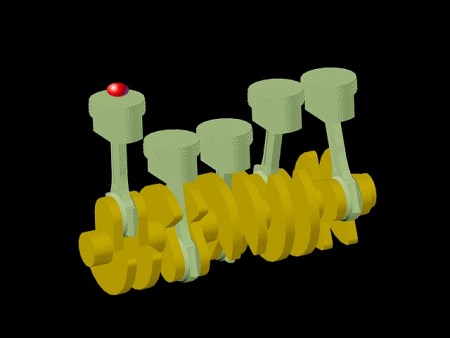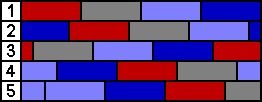|
|
In-line Five-Cylinder Engine

Function
The 5 cylinder in line engine should realise higher torque and higher performance with relatively small single cubic capacities. Additionally, it should be possible to mount this engine transversely. Featuring just one
cylinder head, it is cheaper in comparison to a real V-engine. One engine class with four, five, and six cylinders with a lot of common parts, e.g. pistons, connecting rods and valves, becomes possible.

How it works
Featuring five crankshaft headers with different angles, the single pistons perform their strokes at different times. Also at engines with comparable number of cylinders, e.g. V-5 and B-6, all connecting rods have their own
bearing on the crankshaft, those with more cylinders do not. It is also the smallest number of cylinders where the work cycles overlap. The firing order is 12453, ignition interval 144°.
Disadvantages
The mass balances are compensated less compared with the six-cylinder in-line engine and even compared with the four cylinder in-line engine. 05/08
|
|